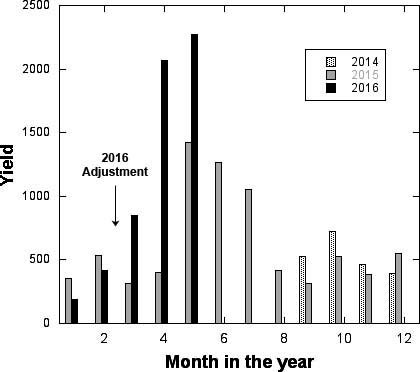A strong earthquake occurred in New Zealand, but the two CAMS stations are functioning normal without any damage. The earthquake caused most damage north from the CAMS stations. Another, but very good news from CAMS@New Zealand is that a technical improvement had a significant gain in the number of orbits captured since April this year (see figure).
The CAMS project started in 2010 with the first stations in California and the professional CAMS stations got soon coverage from Californian amateur volunteers. In 2012 CAMS@benelux got started, covering meteor activity during Californian daylight hours. More CAMS coverage followed in 2014 with CAMS@Florida and CAMS@Mid Atlantic, but managed by the enthousiasm of amateurs, while CAMS@New Zealand started as a professional project. Meanwhile CAMS projects have been successfully set up in Arizona and in the United Arab Emirates. With an annual yield of over 100.000 accurate meteor orbits per year, collected at the northern and southern atmosphere on an almost 24h on 24h basis, CAMS will rewrite meteor astronomy in the years to come.
Read more on: http://cams.seti.org.






